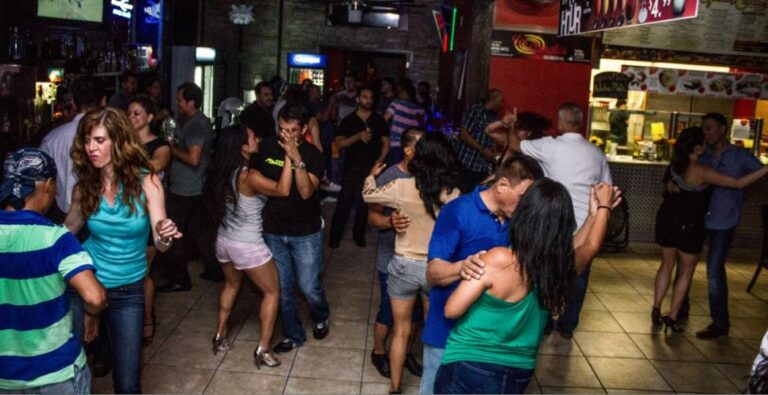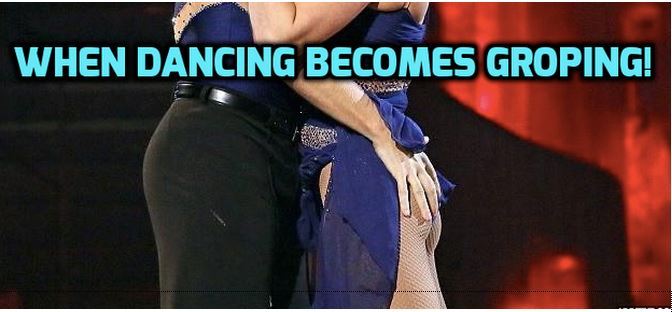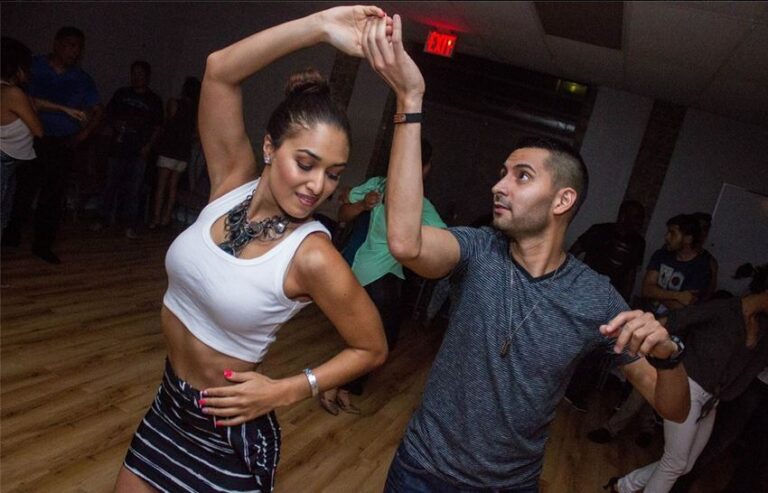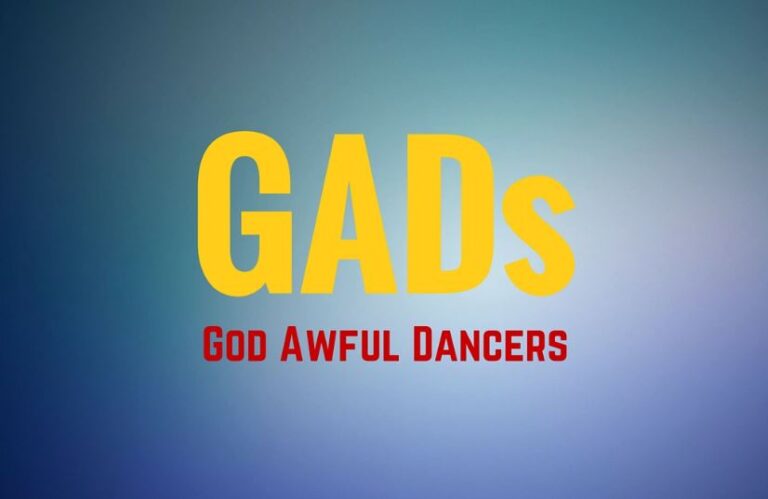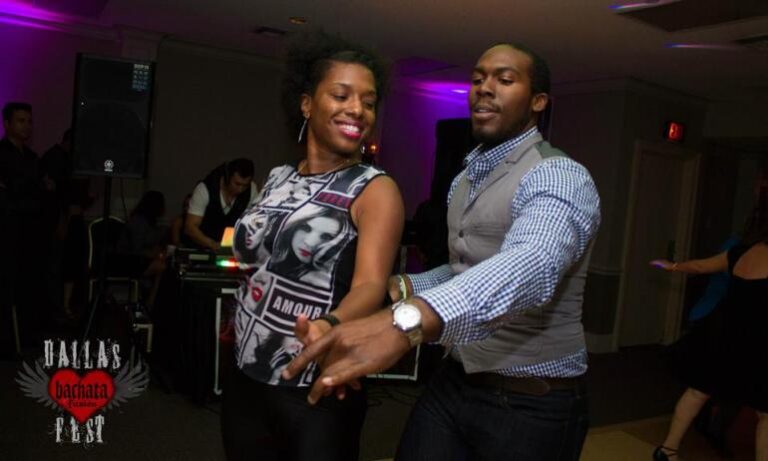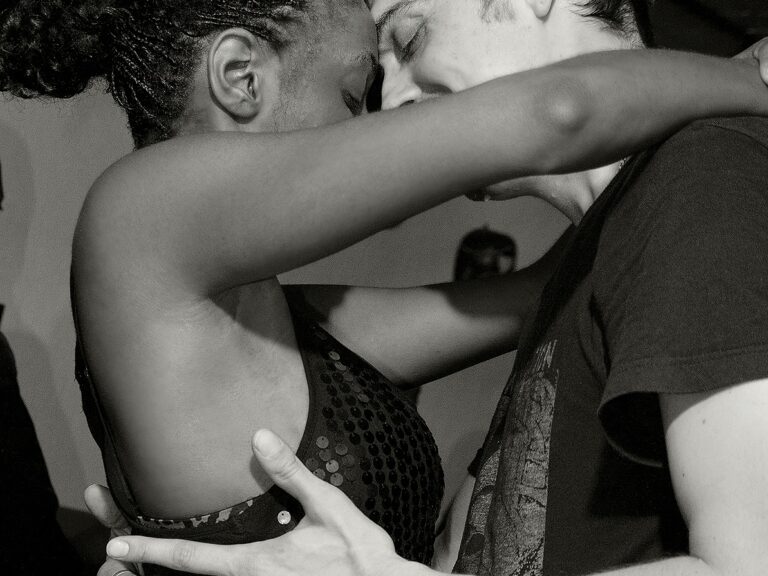I recently wrote an article entitled “Calling It Quits: Why Some Social Dancers Are Hanging Up Their Dance Shoes.” The majority of the feedback I received regarding the article focused upon only one topic; my criticism of a group of dancers I referred to as “Faux (Fake) Professionals.” As this topic provoked many interesting comments from readers and from members of my local dance community I thought it would be worthwhile to delve a bit deeper into this apparently divisive issue.
Without a doubt, there are some truly exceptional dancers that can be found throughout the local, national, and international Latin dance community. These dancers may or may not make their living from dancing, but they are the people who own the dance floor by virtue of their amazing musicality, technique, swagger, and their ability to connect with whomever they dance. These folks are brightly shining diamonds gleaming amidst an ever-growing sea of dance floor cubic zirconia, otherwise known as Faux Professional Dancers.
So–what exactly is my problem with Faux Professional Dancers, (hereafter referred to as “FPDs”), and why do I consider them The Walking Dead of the Latin social dance floor? Well – while some FPDs are fairly harmless, others are undeniably toxic to the health and future of the Latin dance community. What is especially concerning to me is that many FPDs seem unaware that they are part of this dreaded group.
Similar to other contagious diseases, the most effective way to combat the onset of “FPD-itis” is by being aware of its symptoms. None of us are completely immune to this affliction, so if you are starting to suspect that you or some of your friends may be FPDS, here are some tips to assist in your diagnosis:
1. You believe that there is only one “correct” way to dance.
This is a myth created and promoted by FPDs. Real professional dancers allow the music being played to serve as the ultimate guide as to the manner in which they choose to dance.
In my humble opinion, the reason many FPDs insist on dancing only in one style or timing is because they lack experience, (or interest), in listening to Latin music. If you don’t have a single Latin dance song in your personal music collection, or if you only listen to Latin music during your dance class or team practice, you will never be a truly great social dancer.
The never-ending linear dance drama of “on 1” versus “on 2” would become obsolete if more people would take the time to study and listen to Latin music. It is interesting to note that the “1 vs. 2” debate does not exist amongst Cuban dancers who routinely shift back and forth between dancing ‘a-tiempo’ and ‘contra-tiempo’ within the bounds of a single Timba song.
If you are more concerned with following “rules” than with following the music when you hit the social dance floor, you are probably on your way to being an FPD.
2. Your moves don’t match your mouth.
Not to be harsh, but if you’re going to walk like a Baller and talk like a Baller, then you better be a Baller.
There is absolutely no shame in being a beginner or intermediate dancer. We all start our dance journey as beginners and many of us remain intermediate level dancers for most of our lives. What is shameful is holding yourself out as an advanced or elite dancer when you are clearly neither.
I repeatedly encounter FPDs who have been dancing for a relatively short period of time, yet believe themselves to be superior to people who have been dancing for years. The source of this delusion can usually be traced back to rhetoric told or “sold” to them by their dance teacher, or from a desire to fit in with actual elite dancers of their local dance scene.
A young female dancer who used to be part of my local Latin dance community was notorious for publicly pronouncing that none of the Leads in our dance community could “inspire or challenge her” on the dance floor. As this lady had only been dancing for about nine months and could barely make it through a cross body lead without stumbling, hearing her make these pompous statements was just a completely bizarre experience.
This FPD would openly attempt to emulate the manner of a well- known international female dance star but lacked the technique, experience, and training to competently execute any of her dance idol’s moves. As a result, this clueless woman became an unleadable follow and claimed the number one spot on the local “DO NOT DANCE WITH THIS LADY EVER AGAIN” list compiled by experienced male leads.
In the spirit of keeping it real, we can probably all agree that if you are truly an awesome dancer, many folks in the Latin dance community will give you a pass on having a wee bit of arrogance. However, if your dancing skills cannot back up your ego, you are not only making a fool of yourself, but you are alienating many of the people in your dance community who could help make you a better dancer.
3. You are only able to have “successful” social dances with other dancers from your school or dance team.
To me, this is a giant FPD red flag. I received several responses from readers of my prior article who stated that they preferred to dance socially with people from their dance school or team because it was “just easier to dance” with these people.
I’m not buying this excuse. If you really know what you’re doing you should be able to have successful social dances with most people, no matter their dance style or background.
I’ve noticed that truly great dancers aren’t scared of dancing with anyone. They seem to be stimulated from the exciting unpredictability of the social dance floor, and are not focused upon regurgitating classroom taught choreography onto unsuspecting social dancers.
If your ability to dance well depends solely upon the presence of certain dance partners you are either lacking the confidence or skill, (or both), that actually great dancers possess.
4. You always dance like someone is watching.
One of the most addictive aspects of social dancing is the complete sense of freedom many people experience when they step onto a dance floor. The outside world temporarily melts away, and all that matters is connection to the music and to their various dance partners. However, for many FPDs the dance floor is not a carefree, transcendent space. Rather it is just a flat wooden surface upon which they seek to put on a show for anyone who may be watching.
Sometimes you may experience a particularly “hot” social dance that makes everyone stop and watch. This is one of the fun and unexpected things that tends to happen on the Latin social dance floor. But – this spontaneous experience is completely different from the unnatural ‘performances’ that some FPDs feel compelled to create during every dance on the social dance floor.
A little over a year ago I was dancing with a cocky FPD at a local dance event. This young man was actually a pretty decent dancer, but he possessed an attitude that almost had to be seen to be believed. Anyway – in the middle of our social dance this FPD dramatically broke away from me and began executing a lengthy, mega-exuberant, completely rehearsed shine pattern.
This guy was so into whatever he was doing that I could have pretty much done anything, (like disappear, grow an extra head, or give birth to triplets on the dance floor), and he would never have noticed. However, while he wasn’t paying any attention to me, I noticed that he was constantly looking around to see who was watching him dance. When he seemed satisfied that he was being watched by a sufficient number of people he grabbed me and began spinning me every which way, ultimately ending the dance with a dramatic dip. At the end of the dance his friends all clapped and he walked from me without saying a word.
Needless to say, (but I’ll say it anyway) – this was not an enjoyable social dance for me. Perhaps this is just a personal preference, but I would much rather have a simpler, less showy dance with a partner who cares about his connection to me and the music, than to have a dance with a partner who just wants to show off. Truly great dancers care more about the experience they are sharing with their partner rather than with creating “clips” for You Tube.
5. You believe that only “trained” dancers belong on the social dance floor.
This is an issue that was debated quite vigorously amongst some of the readers who responded to my earlier article. And, honestly, I can see both sides of this issue.
On the one hand – the social dance floor belongs to absolutely everyone who wants to step foot upon it. But – on the other hand – it does seem beneficial to at least have an idea of how to do the basic step before you start bumping into everyone else on the dance floor.
Just this past weekend, I experienced being enthusiastically dragged around the dance floor by a man who admittedly had never had a dance lesson in his life. While it wasn’t the highlight of my night, it wasn’t a big deal. It was a five minute experience with a very nice person who was, 1) nice enough to ask me to dance, and 2) who was having a lot of fun enjoying the music.
At the root, when we strip away everything else, (“the 1 or the 2,” the designer dance shoes, the performance teams, etc.,) dancing at its core is simply a joyous expression of music. So – if we think about that way, the social dance floor should always be a place full of welcome. If this kind of thought is an intolerable one for you, you should think carefully about the kind of dancer, and the kind of person you want to be.
In summary, I want to thank everyone who took the time to write to me or talk to me about my last article. I am no one special; I am just someone who loves to dance and who loves to write about dancing. Please feel free to continue sharing your thoughts with me as I learn something from each and every comment.
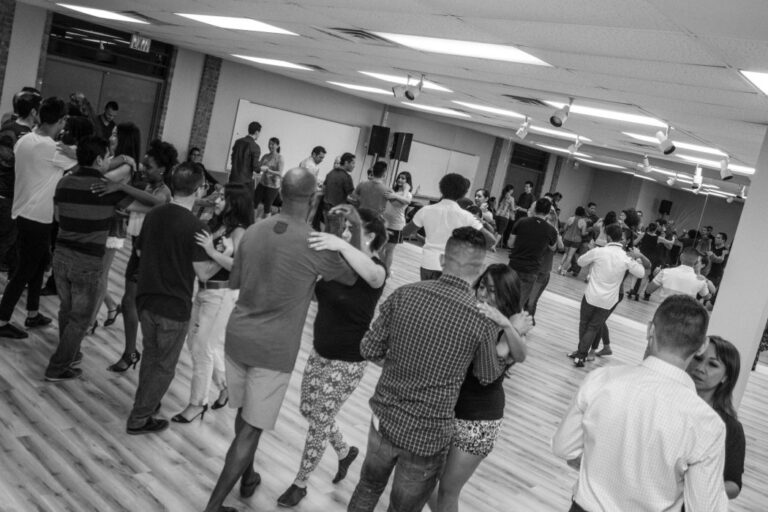
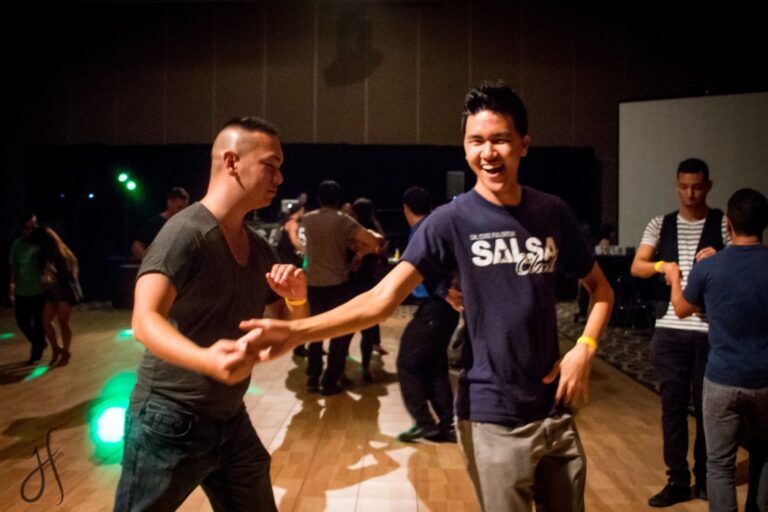
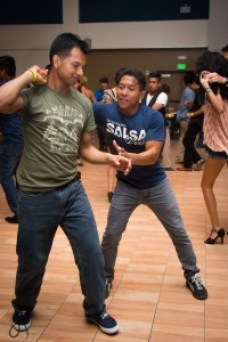 But this topic has been resting on my heart recently because I’ve been hearing more stories of homosexual dancers (men, in particular) being turned down in particularly rude or nasty ways. If conventional female ‘follows’ make the effort to be polite when they say ‘no’ to a dance, I do not see why males cannot extend this same courtesy when being asked to dance by another male–homosexual or otherwise. But yet, I have seen and heard of hurtful looks, huffy attitudes and judging gestures being made towards males who ask other males to dance. This hurts because dancing is supposed to a shared art between all, and its root is in community—especially social dancing. It wasn’t until a friend pointed out to me that most of these rejected men were homosexual, that I began to see a bigger problem.
But this topic has been resting on my heart recently because I’ve been hearing more stories of homosexual dancers (men, in particular) being turned down in particularly rude or nasty ways. If conventional female ‘follows’ make the effort to be polite when they say ‘no’ to a dance, I do not see why males cannot extend this same courtesy when being asked to dance by another male–homosexual or otherwise. But yet, I have seen and heard of hurtful looks, huffy attitudes and judging gestures being made towards males who ask other males to dance. This hurts because dancing is supposed to a shared art between all, and its root is in community—especially social dancing. It wasn’t until a friend pointed out to me that most of these rejected men were homosexual, that I began to see a bigger problem.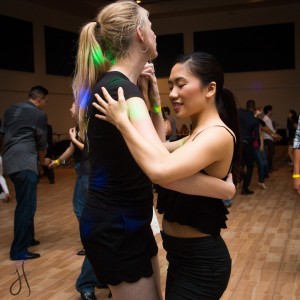
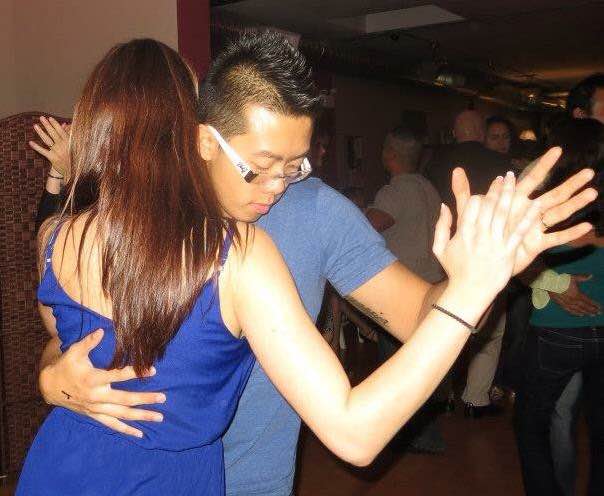
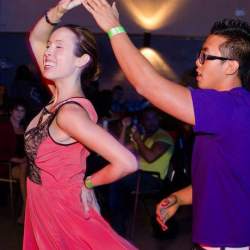 It’s a very interesting dynamic being married to my favourite dance partner. When he and I first met at a Dance Dance Revolution tournament when were fourteen years old, we never imagined we would be married and dancing (much better!) thirteen years later. Those who are close to us often say we were meant to dance together. That being said, many of my friends and colleagues are surprised to hear that at any given dance event, he and I spend most of the night dancing with other people. I’m sure many of us have heard these concerns from the non-salsa dancers in our lives: “Isn’t this style of dance really sensual?” “I would never let my spouse/partner dance with someone else like that!” “Don’t you get jealous?”
It’s a very interesting dynamic being married to my favourite dance partner. When he and I first met at a Dance Dance Revolution tournament when were fourteen years old, we never imagined we would be married and dancing (much better!) thirteen years later. Those who are close to us often say we were meant to dance together. That being said, many of my friends and colleagues are surprised to hear that at any given dance event, he and I spend most of the night dancing with other people. I’m sure many of us have heard these concerns from the non-salsa dancers in our lives: “Isn’t this style of dance really sensual?” “I would never let my spouse/partner dance with someone else like that!” “Don’t you get jealous?”